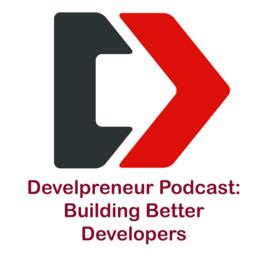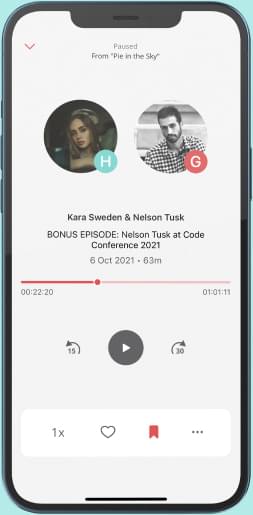
Work-Life Balance Strategies: Setting Boundaries for a Healthier Life
In the latest episode of the Building Better Developers podcast, hosts Rob Broadhead and Michael Meloche discuss work-life balance strategies. For entrepreneurs, developers, and business owners, the lines between work and personal life can blur, leading to burnout, inefficiency, and dissatisfaction. This episode explores practical work-life balance strategies to maintain a healthy balance while ensuring productivity and well-being. The Challenge of Work-Life Balance Strategies One of the key challenges discussed is the increasing difficulty of separating work from life, especially in an era where remote work, side hustles, and always-on technology have become the norm. The hosts point out that many professionals, particularly those in the tech and business sectors, find themselves constantly engaged with work, whether through emails, Slack messages, or late-night problem-solving sessions. The modern concept of a "side hustle" further complicates this dynamic. What often starts as a passion project or additional income stream can quickly consume personal time, blurring the distinction between work hours and personal relaxation. While entrepreneurship is rewarding, it can also become an endless loop of obligations if work-life balance strategies are not firmly established. Effective Work-Life Balance Strategies 1. Establish a Dedicated Workspace Rob shares a personal anecdote about when his work desk was next to his bed. This setup made it nearly impossible to separate work from personal life. To create a clear distinction, having a designated workspace—whether a home office, a co-working space, or a specific corner in a room—helps reinforce the mental shift between work and personal mode. 2. Implement Physical and Digital Boundaries Michael emphasizes the importance of setting up physical boundaries between work and recreation areas and advises using technology to enforce these boundaries. Many devices offer features to block work-related notifications during personal time. Setting up "Do Not Disturb" hours or using tools that limit access to work apps outside of scheduled hours can be invaluable in implementing work-life balance strategies. 3. Use Scheduling and Automation Tools Rob and Michael highlight the importance of structured scheduling. By blocking out specific work and personal hours in your calendar, it becomes easier to stick to a routine. Additionally, automating specific tasks—such as scheduling emails or setting up chatbots for customer inquiries—reduces the need to be "always on." 4. Minimize Work Notifications After Hours One simplest yet most effective work-life balance strategy is silencing work-related notifications after hours. The hosts recommend completely turning off email, Slack, and other work alerts when not on the clock. This reduces stress and prevents the temptation to "just check one more email." 5. Separate Work and Personal Devices A significant challenge for many is using the same device for work and personal activities. Keeping work-related apps and emails off personal devices—and vice versa—creates a natural boundary if possible. Rob notes that gaming enthusiasts should keep their gaming rig separate from their work setup to avoid unnecessary distractions. 6. Define and Communicate Office Hours For those running their businesses, setting precise office hours is crucial. Clients and colleagues should know when you are available and when you are not. This prevents work from spilling into personal time unnecessarily and sets expectations for responsiveness. The Role of Accountability in Work-Life Balance Strategies The episode also touches on the importance of external accountability. Whether it’s a spouse, family member, or even a reminder app, having something or someone to hold you accountable for stepping away from work can make a significant difference. Children, for example, often remind parents when they’re working outside their designated hours. Additionally, being part of a community that values work-life balance strategies—whether through networking groups, mastermind sessions, or peer discussions—helps reinforce these boundaries. Hearing from others facing similar struggles can provide motivation and practical advice. The Challenge for Listeners Rob and Michael challenge listeners to pick a specific period to disconnect from work this week. It could be an evening, a full day, or an entire weekend. Set up technology to block notifications, inform colleagues and clients of your off-hours, and focus on personal time. The goal is to experience the benefits of separation between work and life. By implementing these work-life balance strategies, professionals can reclaim their personal time, reduce stress, and ultimately enhance their productivity when they are working. As the episode concludes, the hosts encourage everyone to take proactive steps toward achieving a sustainable work-life balance. Stay Connected: Join the Develpreneur Community We invite you to join our community and share your coding journey with us. Whether you’re a seasoned developer or just starting, there’s always room to learn and grow together. Contact us at info@develpreneur.com with your questions, feedback, or suggestions for future episodes. Together, let’s continue exploring the exciting world of software development. Additional Resources Navigating Communication Tools in Modern Workplaces Work Balance And Trading Money For Happiness Balance Your Time in a Busy World: Tools and Techniques Why Habits Matter: Unlock Peak Productivity and Success Building Better Businesses – With Bonus Content
From "Develpreneur: Become a Better Developer and Entrepreneur"


Comments
Add comment Feedback